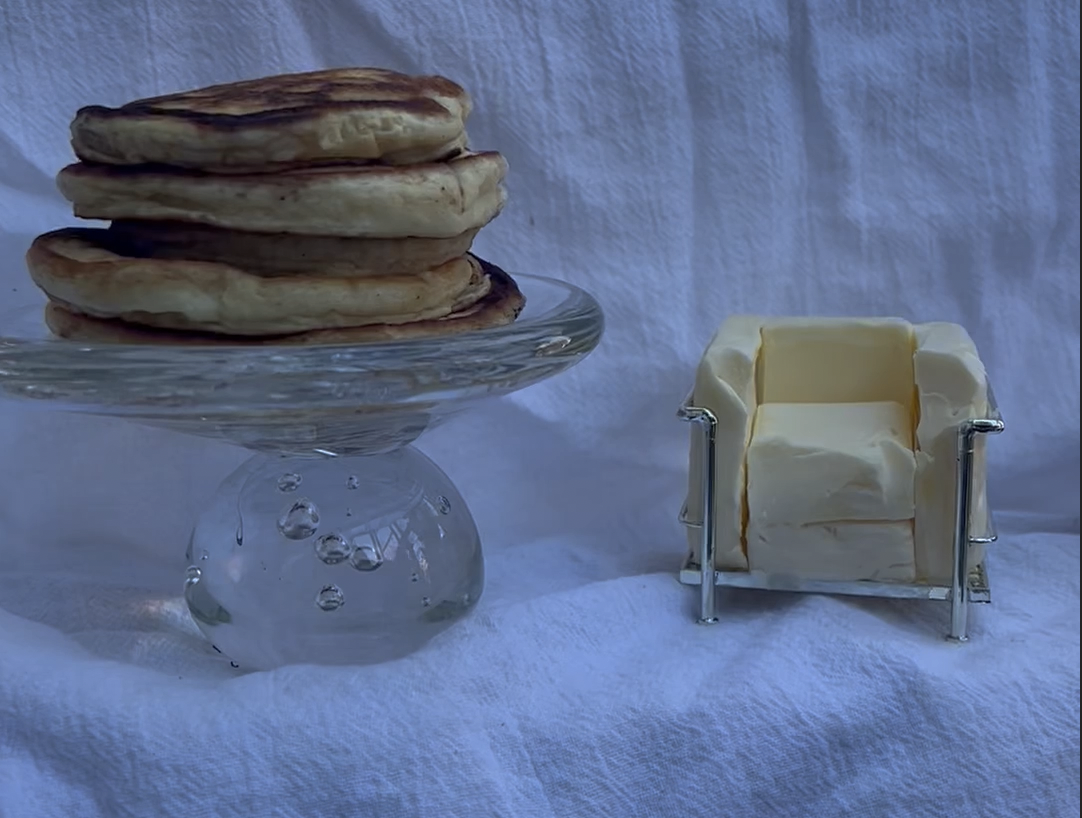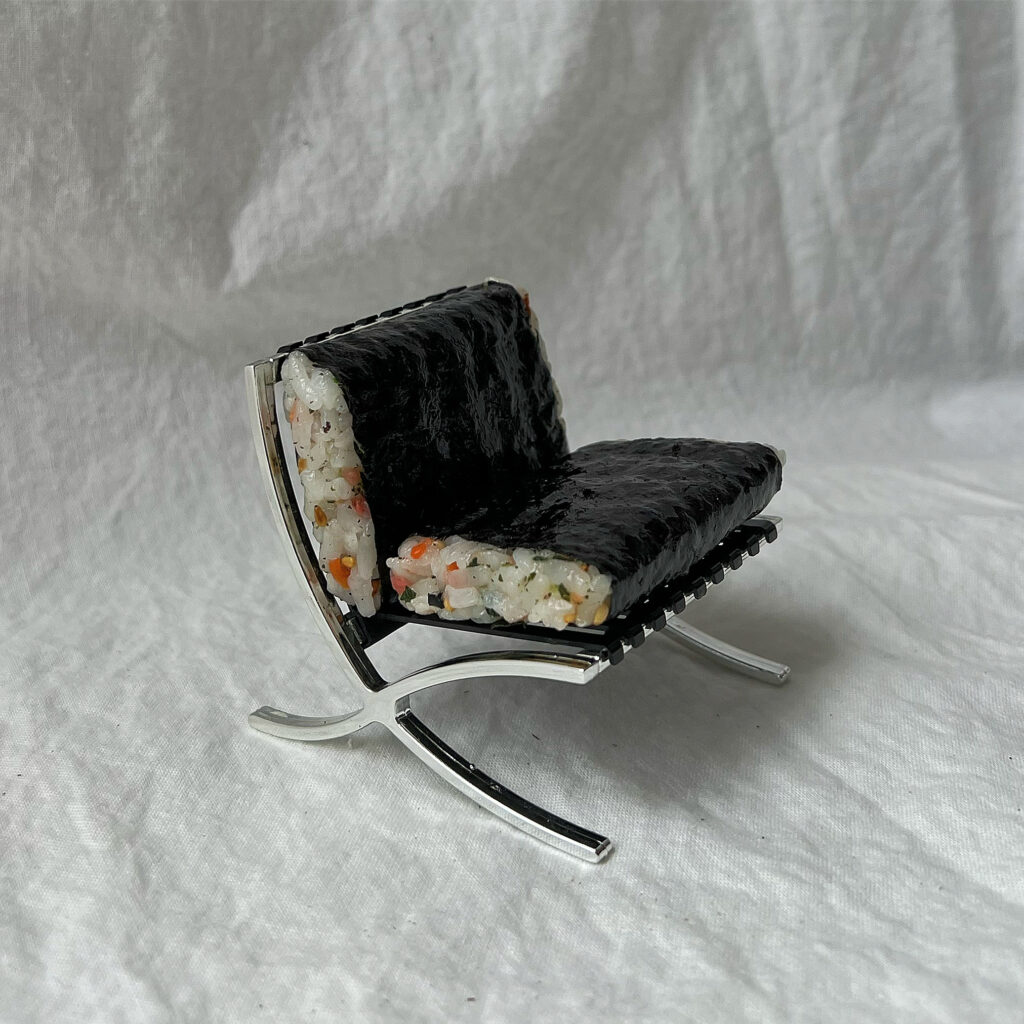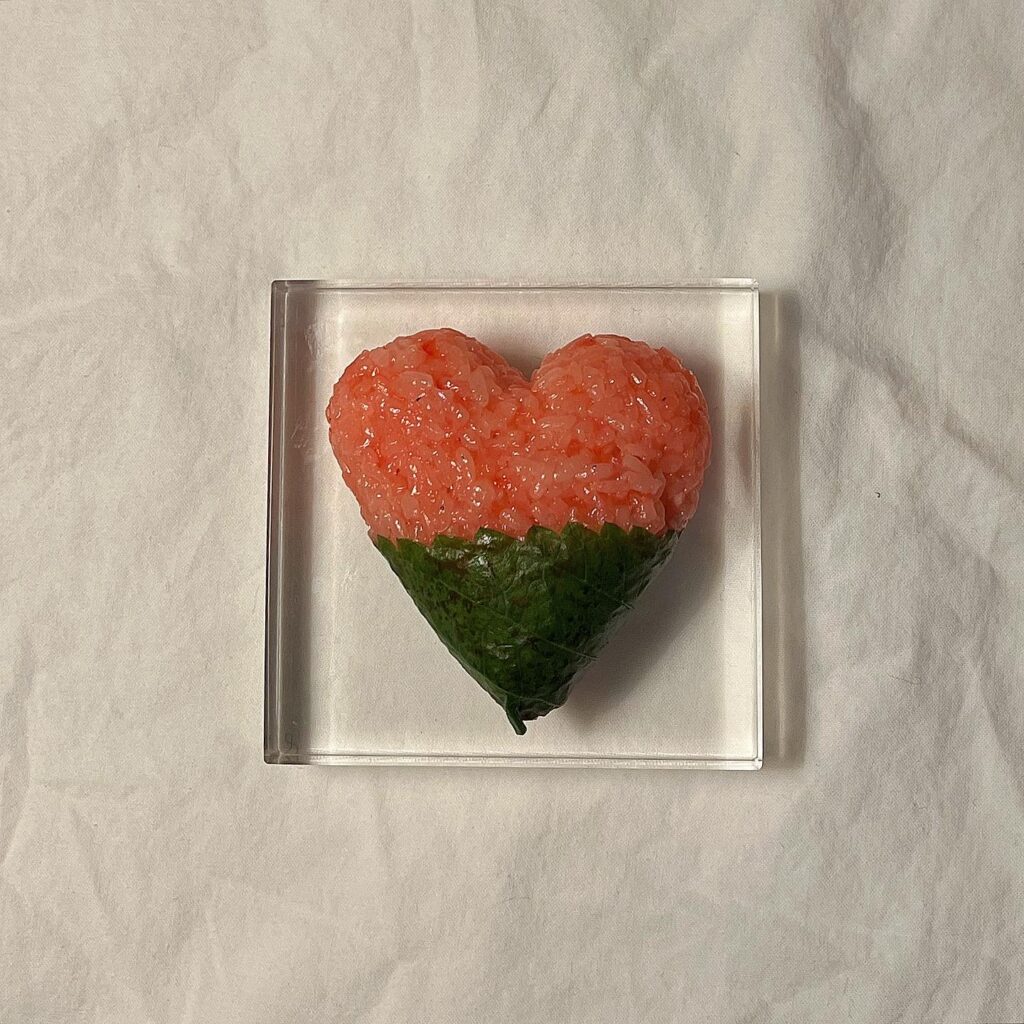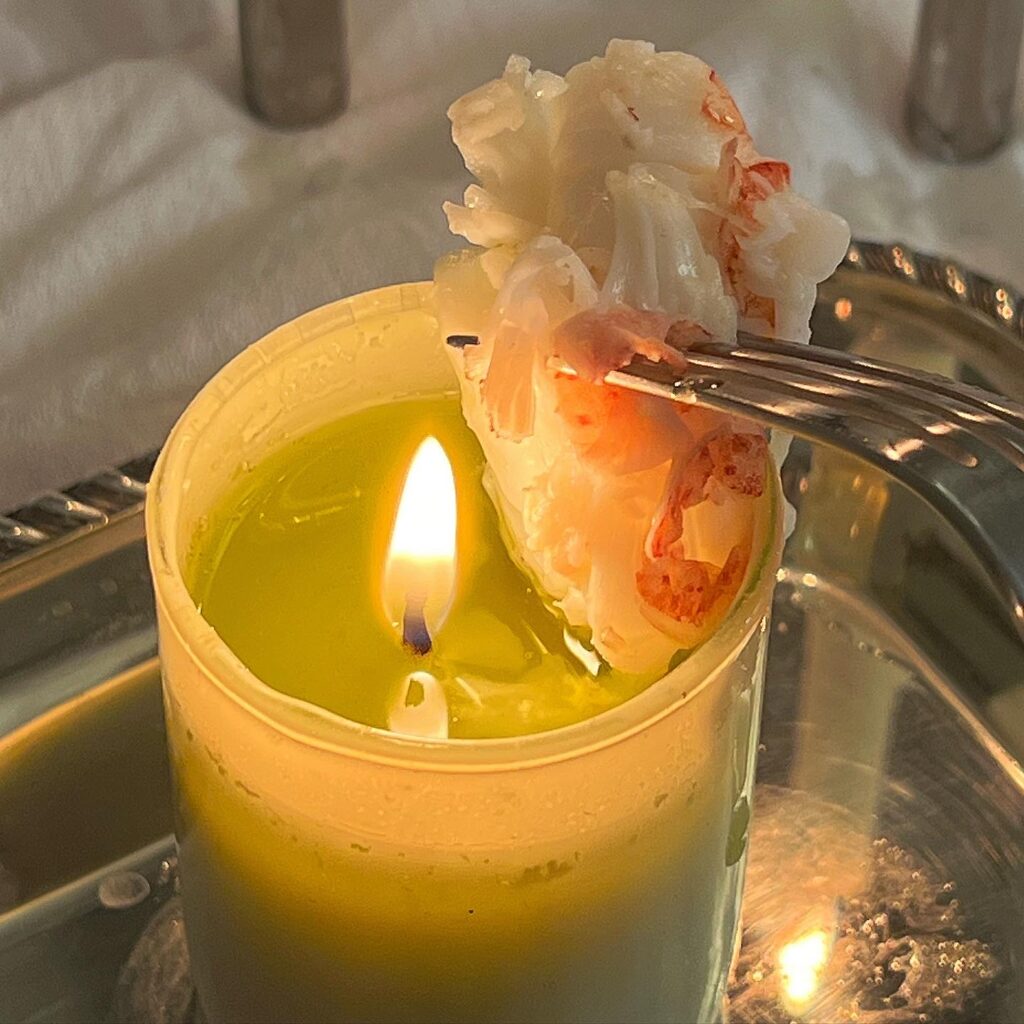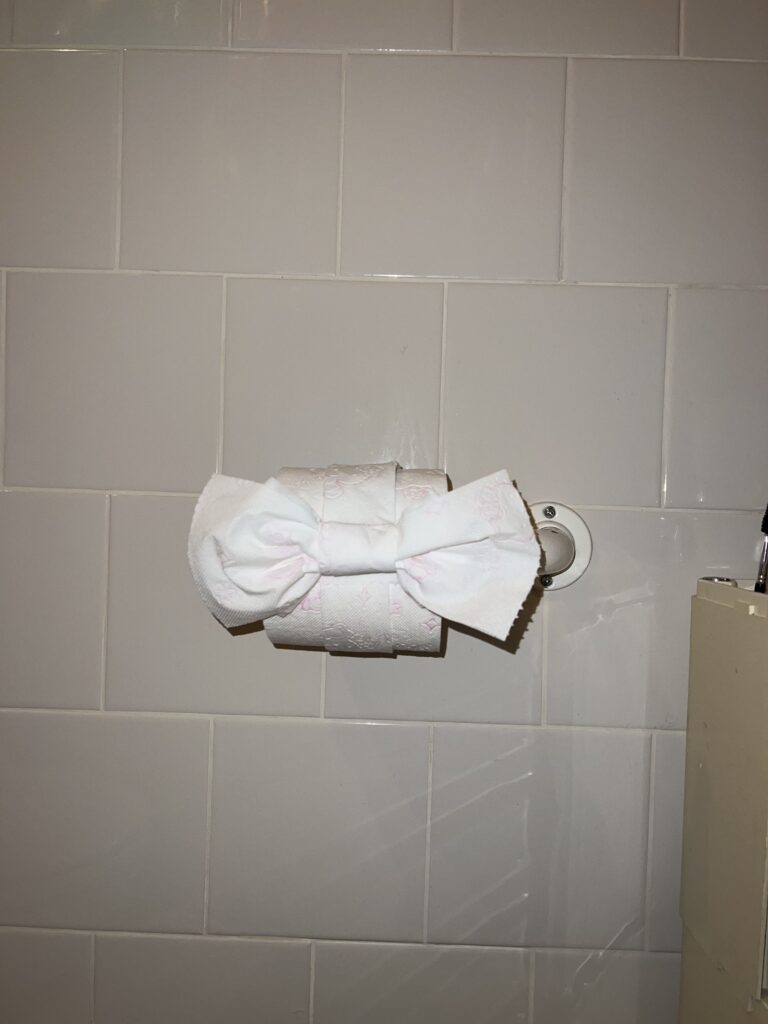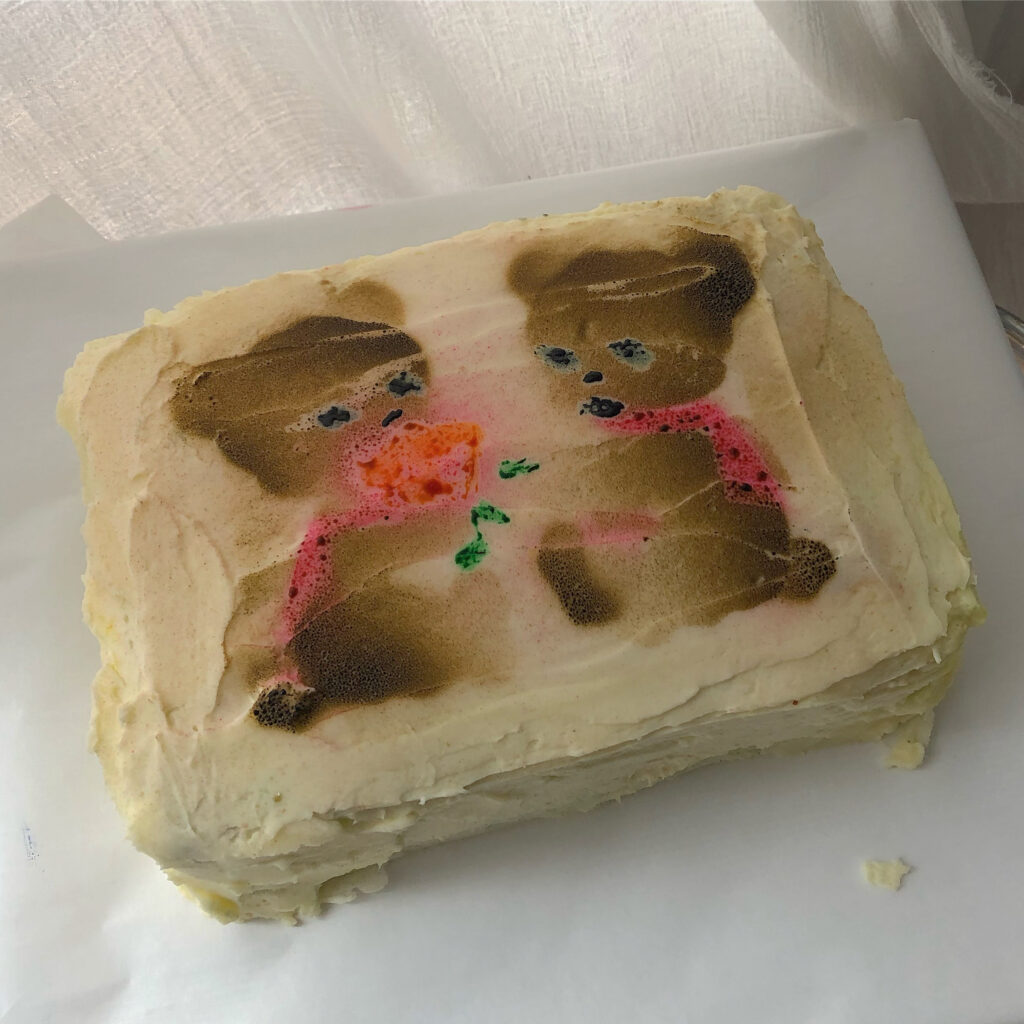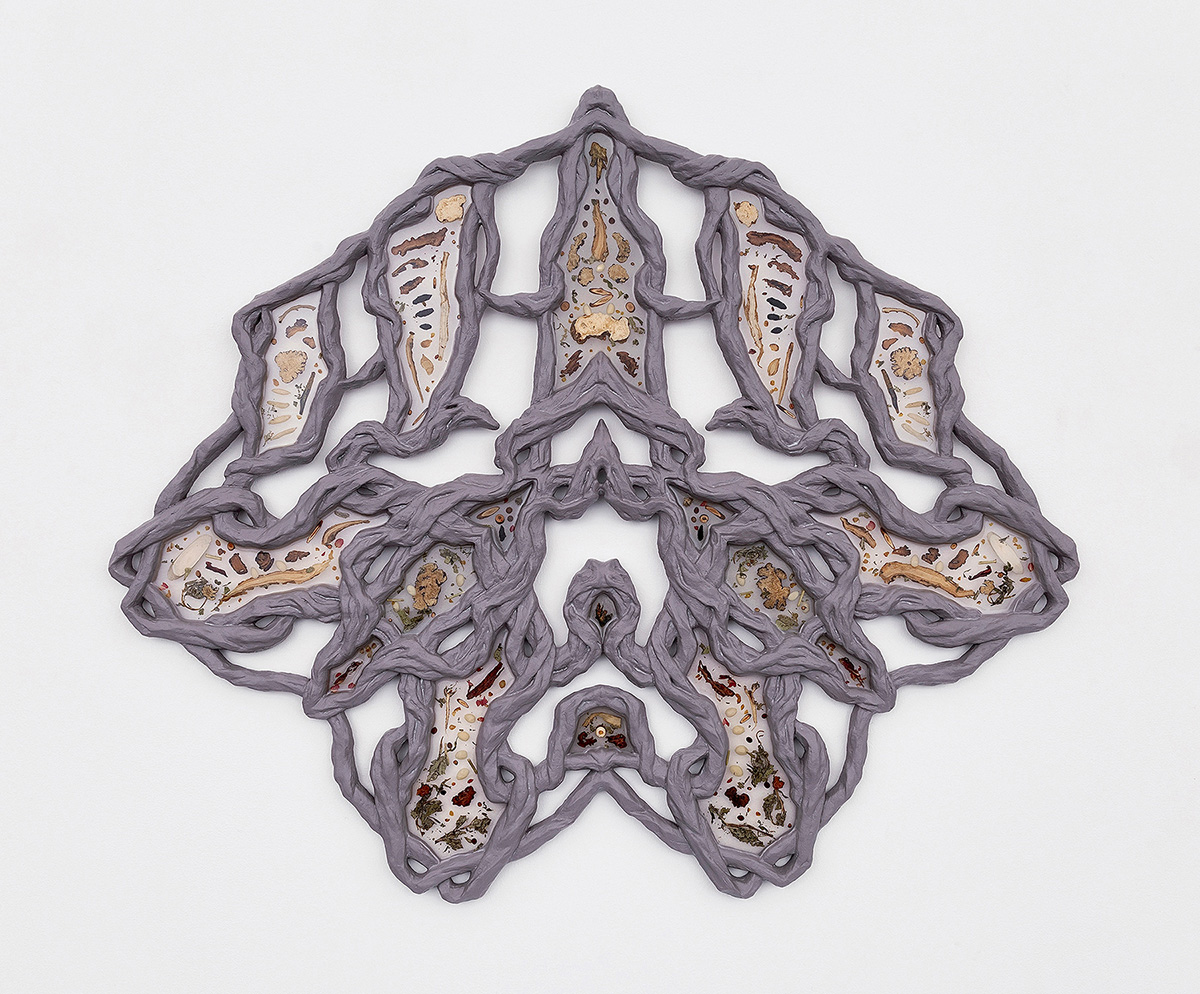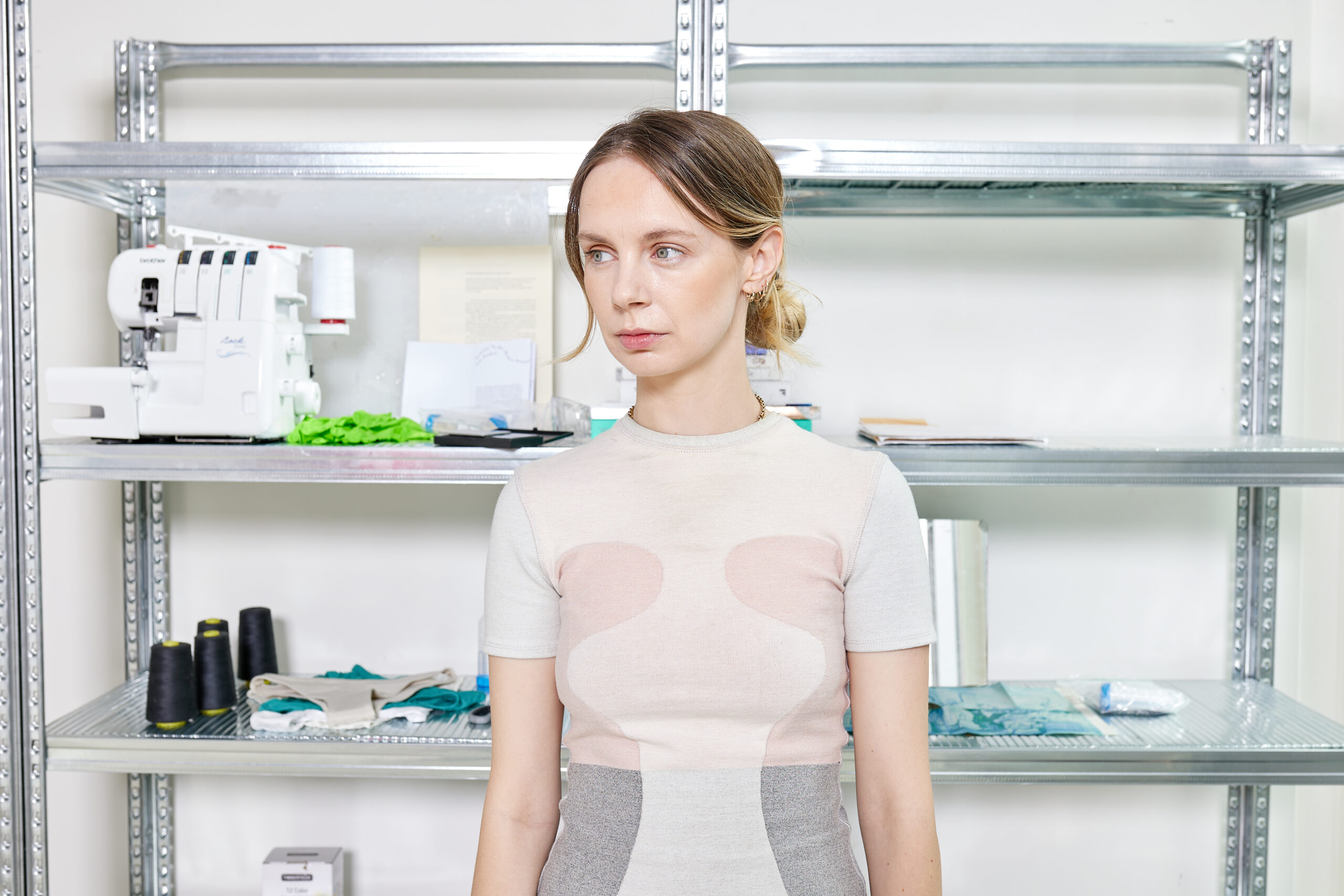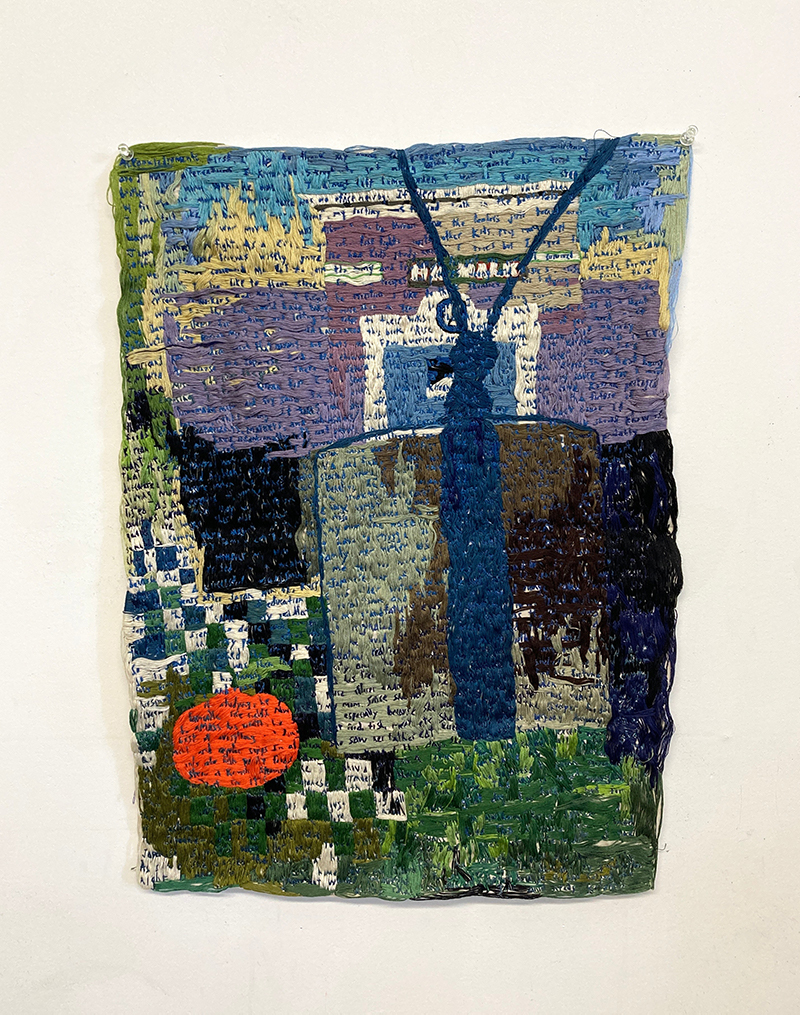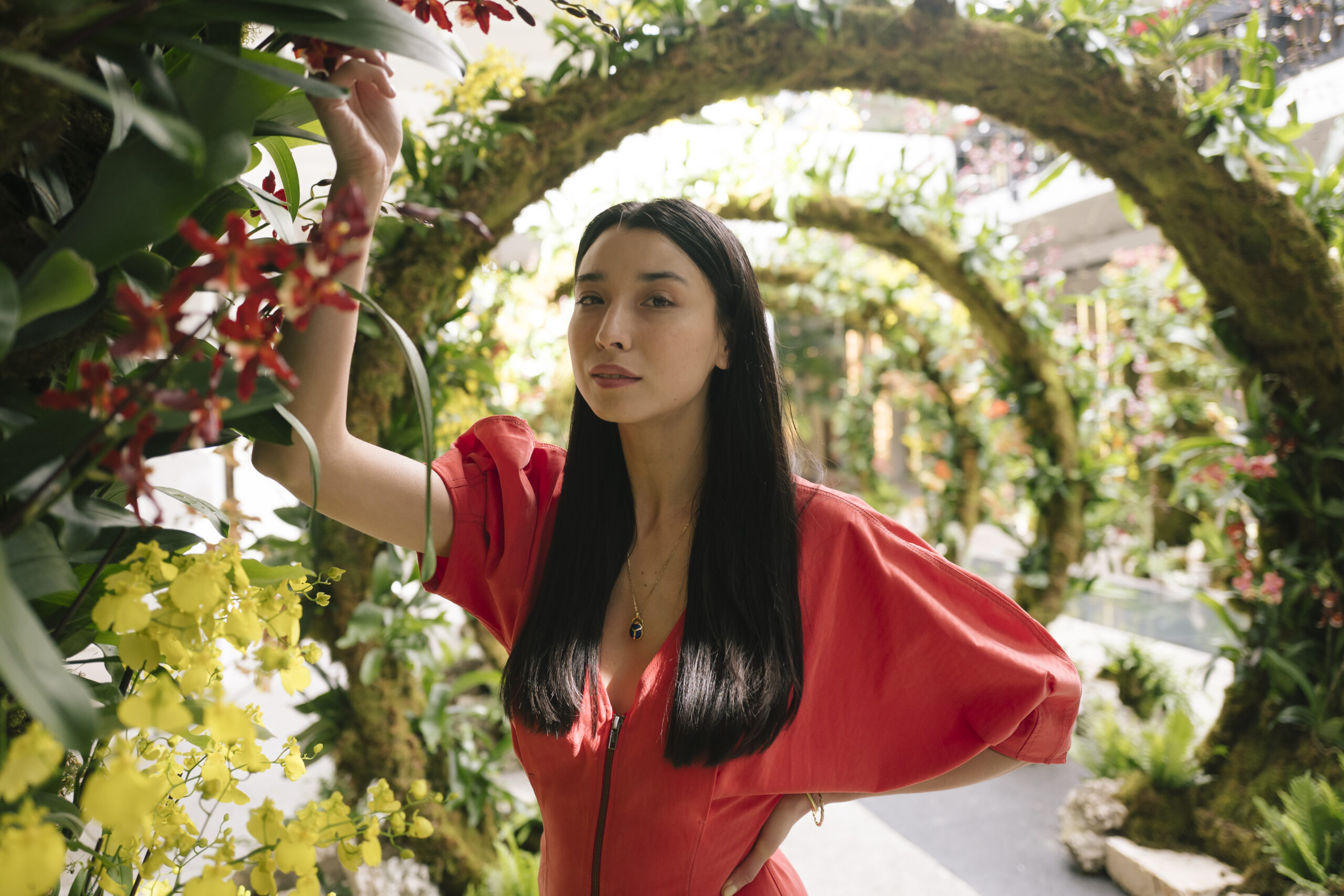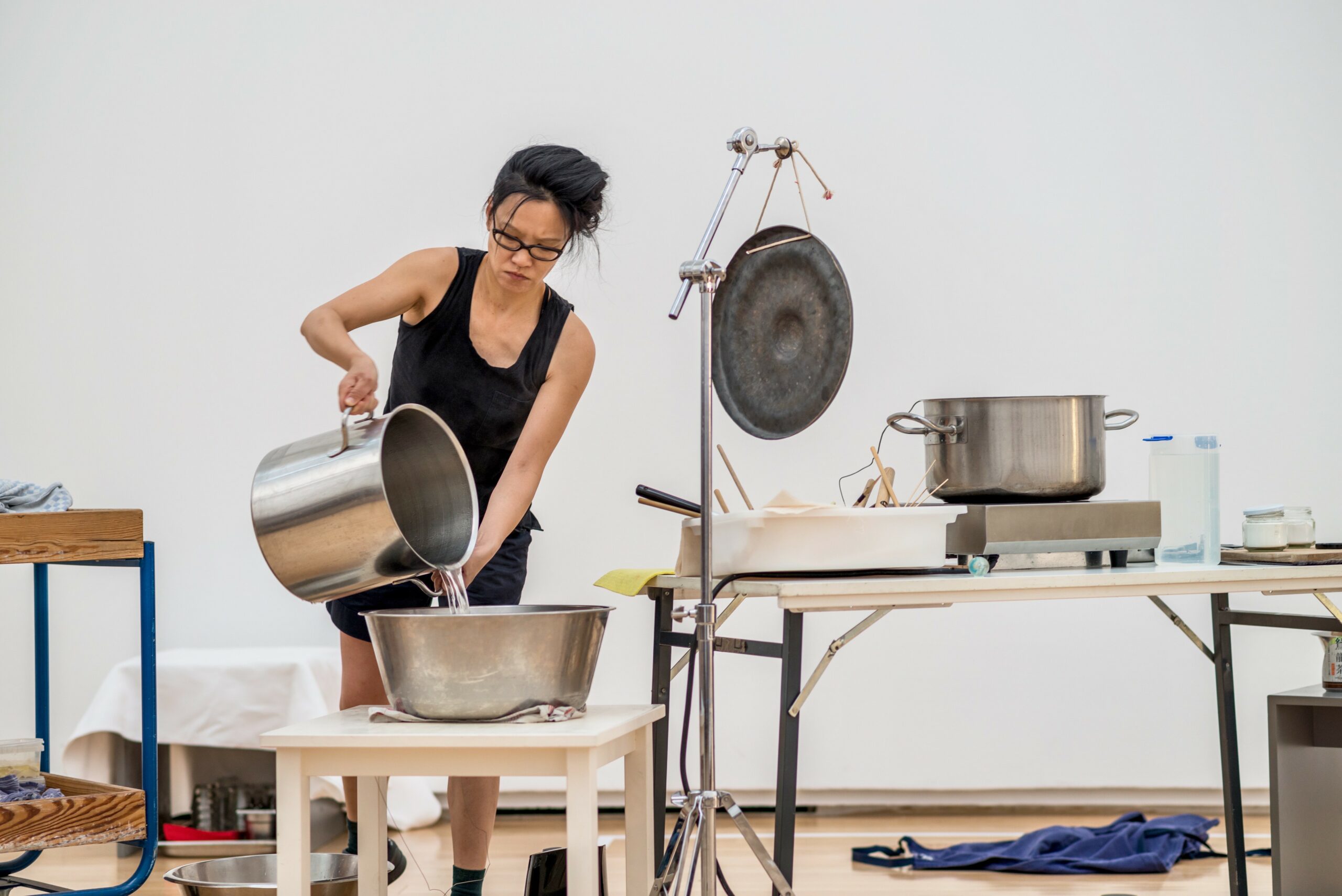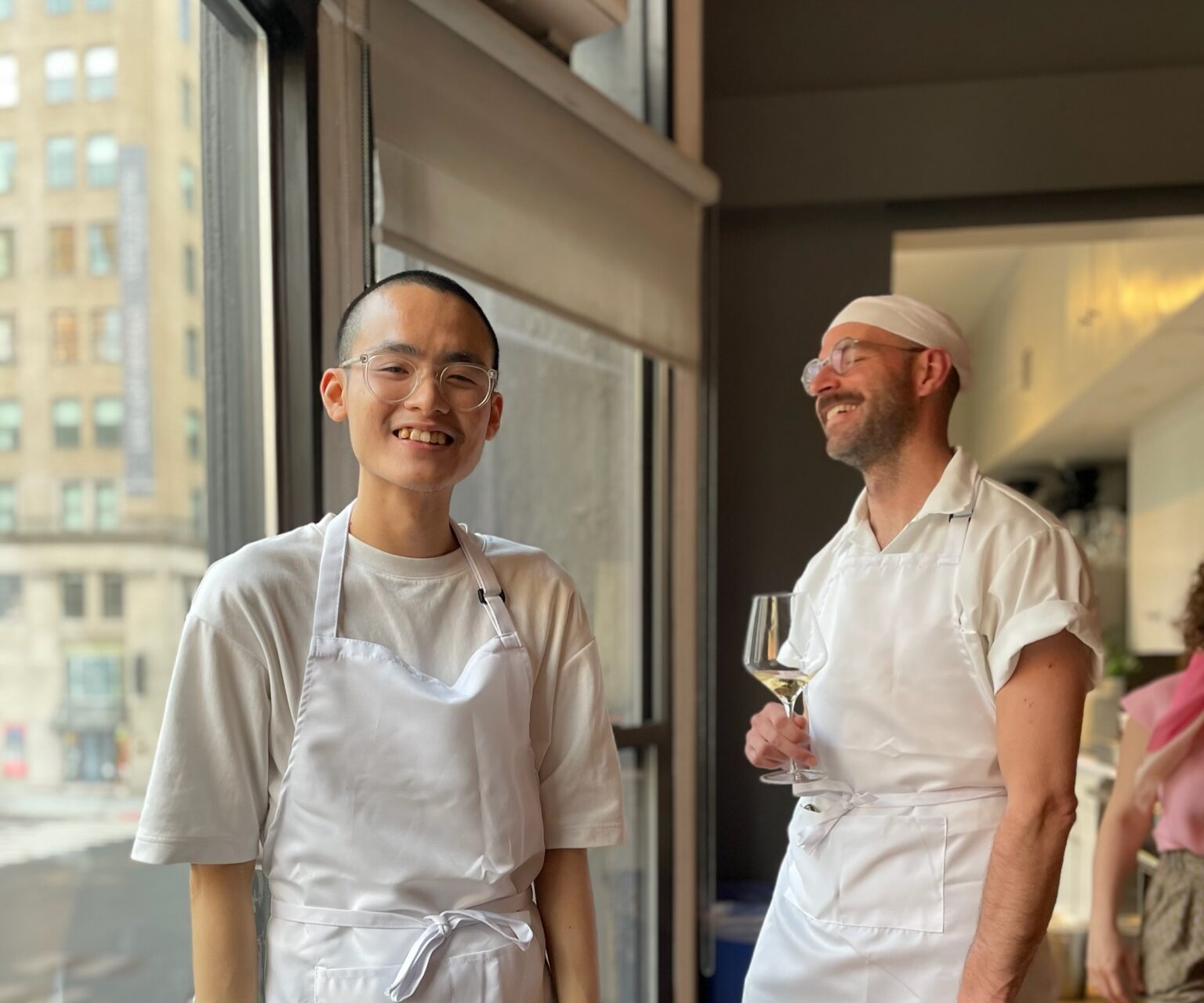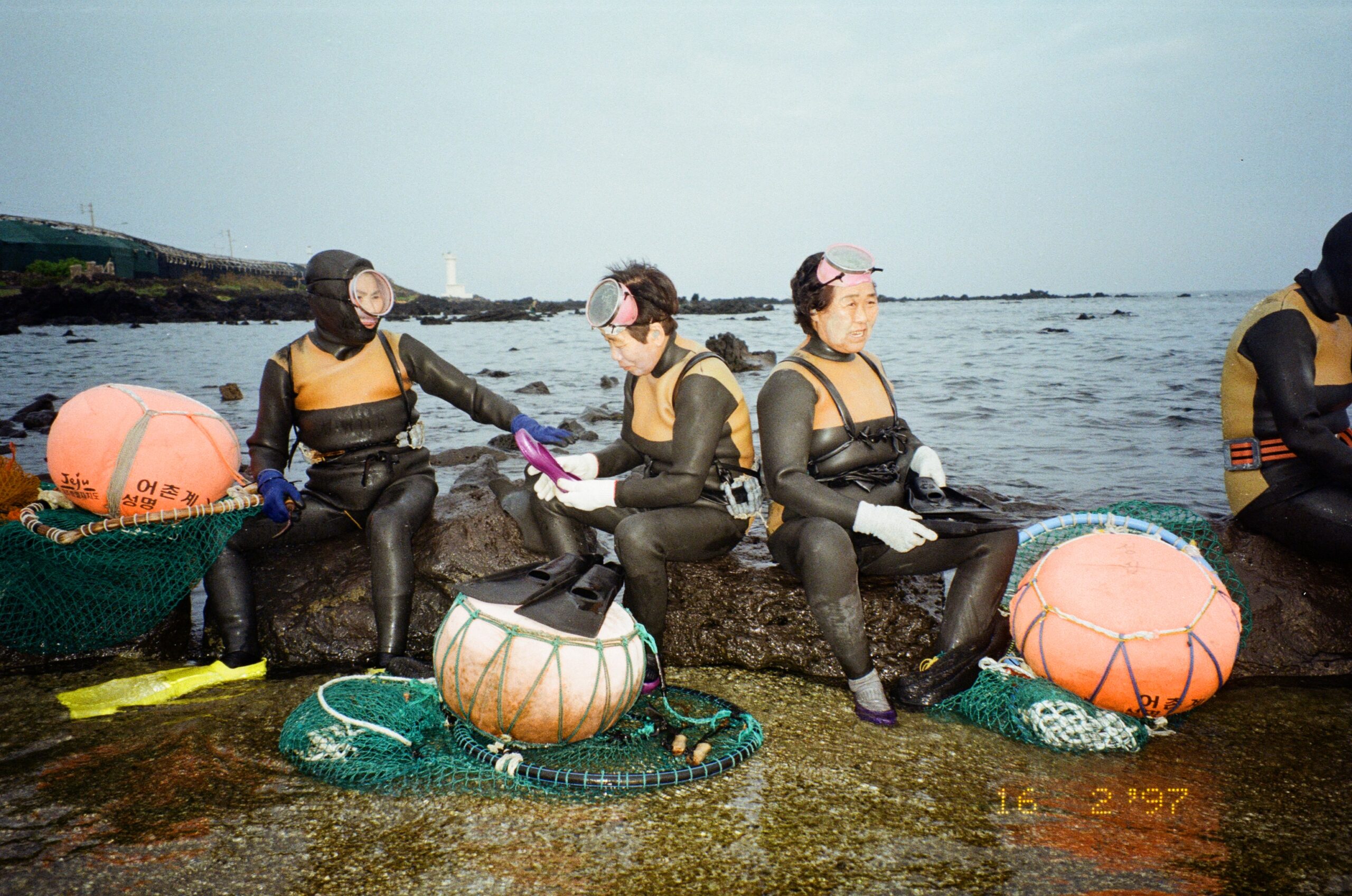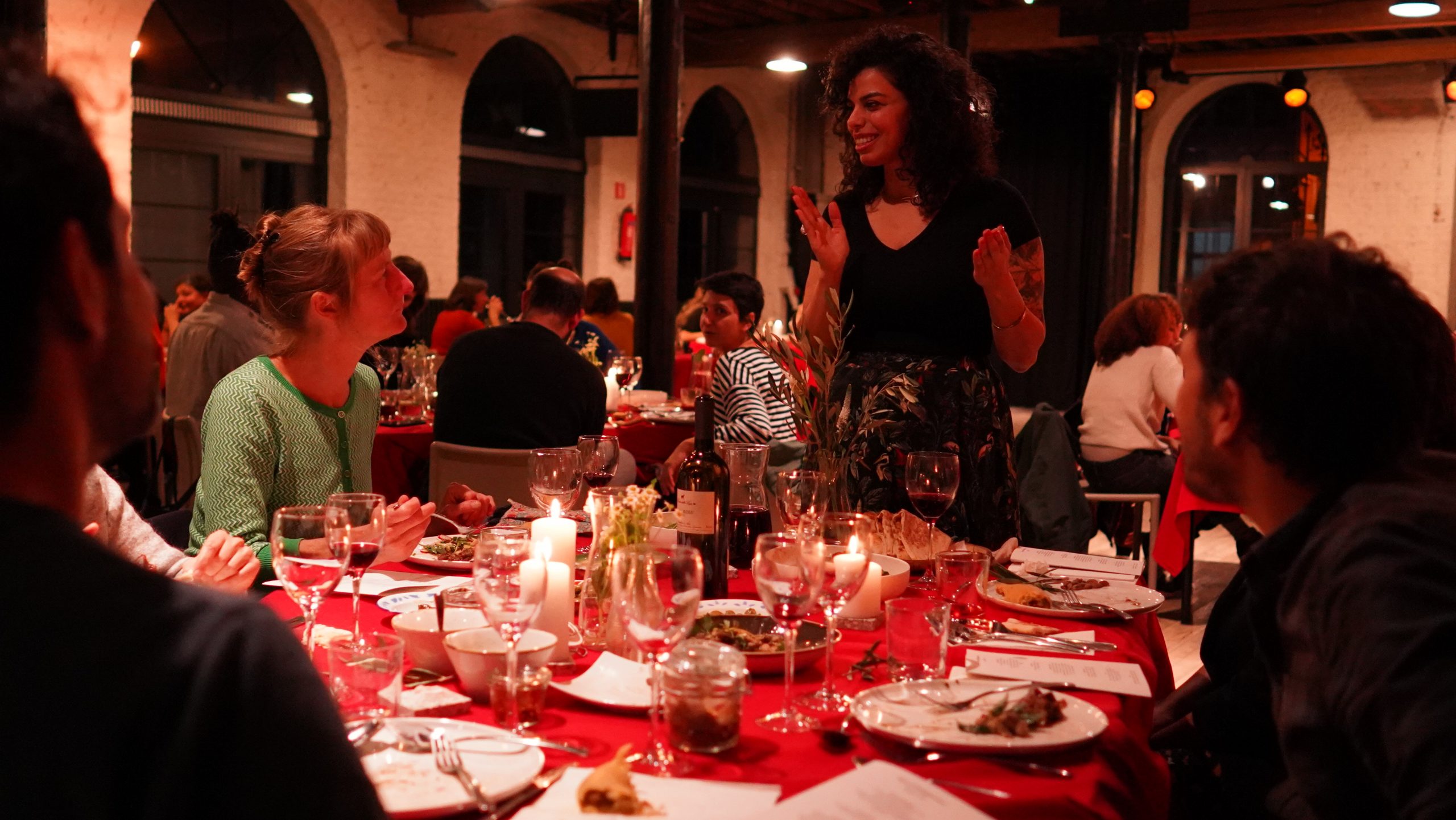Methods & Provisions is a series documenting the memories, rituals and soundtracks of people who love food.
From a buttery scale model of Le Corbusier’s LC2 chair to a white frosted cake airbrushed with Sanrio character Kuromi, Suea’s playful food styling experiments with form and function, pushing the boundaries of how we see and consume food. According to Suea, the creator behind Suea’s Dinner Service and Suea’s Cake Service, these ideas stem from a life-long obsession with food combined with a creative background in fashion. It makes sense, then, that her dinner tables and food installations take on a dreamlike quality, featuring otherworldly-colored produce and butter candles whose wax doubles as dipping sauce. In this conversation, we talk about the fundamentals of designing a dinner party, the rituals in hospitality and what it means to play with your food.
Isabel Ling:
Tell us a little about yourself, how did you come to work in food? And what informs your relationship with food?
Suea:
I was born in Korea and my family immigrated to Montana when I was around 4. I grew up in Montana until the third grade and my parents separated so my mom, sisters and I moved to New Jersey, where we knew other Koreans and my mom had a better support network. I grew up in a traditional Korean-American setting, in the sense that my mom always cooked for us. There was a home-cooked meal on the table everyday.
In middle school and high school, most of my friends were white and/or American and I wanted to eat more non-Korean food. Of course now, people are always like you’re so lucky your mom cooked every meal, which I agree with, but at that time I just wanted pizza or Olive Garden. I felt left out. Around high school I really started cooking a lot more. [Since] I grew up in New Jersey there were a lot of Italian Americans around me, I taught myself what I was familiar with eating – pastas, salads, paninis. Cooking came so naturally to me, I really started to consider pursuing a food career. I even worked at a restaurant in high school, but that experience showed me how brutal kitchens can be, and at the time, I thought the only career in food (at least one my parents might approve of) was to be some sort of fine-dining chef. I went to UCLA for college and focused on the one thing I wanted to pursue even more than food at the time: fashion.
I landed my dream job right after college at Opening Ceremony, on the women’s buying team. When I moved to New York five or six years ago for this job, I was like ‘Oh, okay. I’ve made it!’ Four years passed and eventually OC closed down in 2020. It gave me space to rethink what I wanted to do.
I think food definitely fueled my interest in leaving the fashion world. I think that I, like most people who work in fashion for a long time, got tired of it.
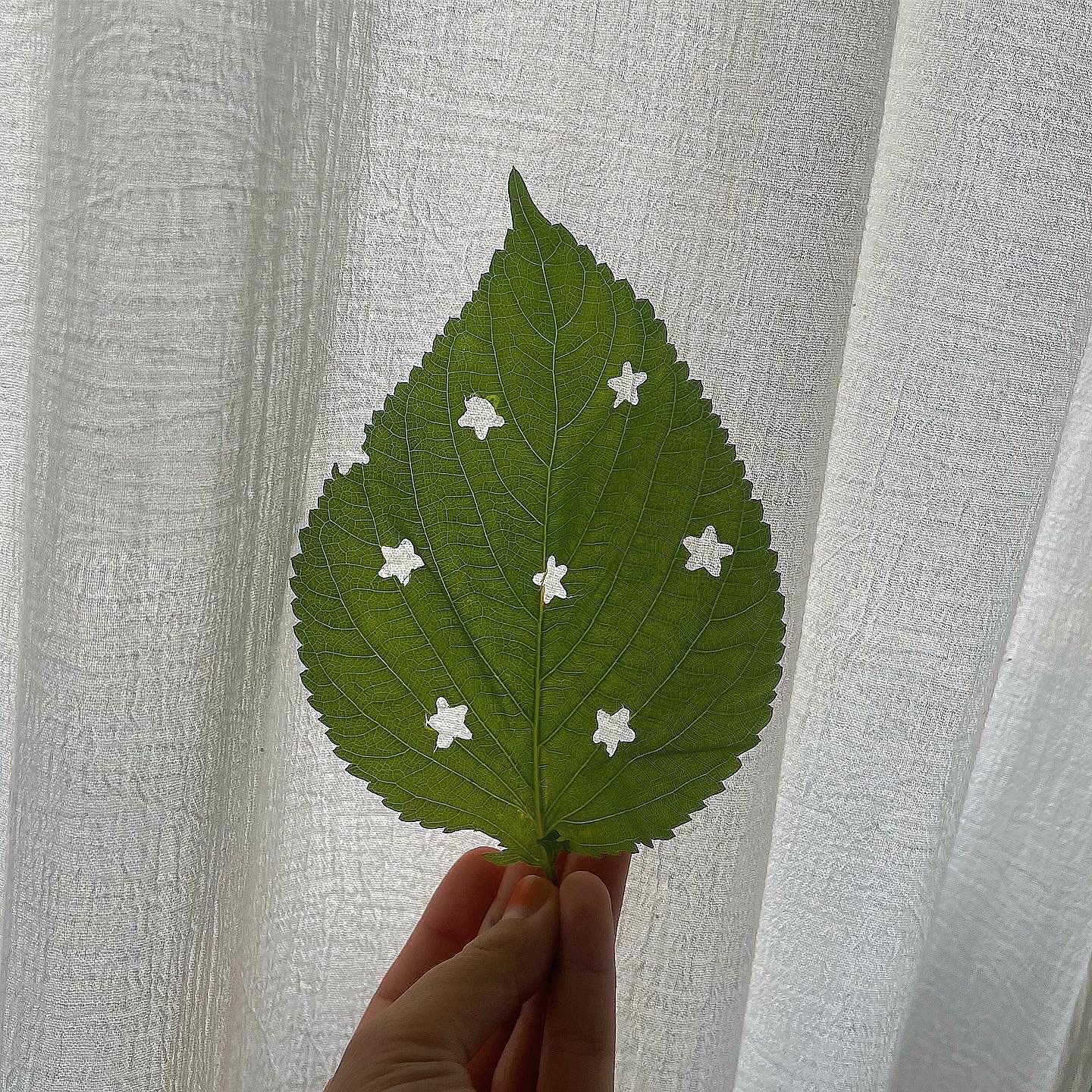
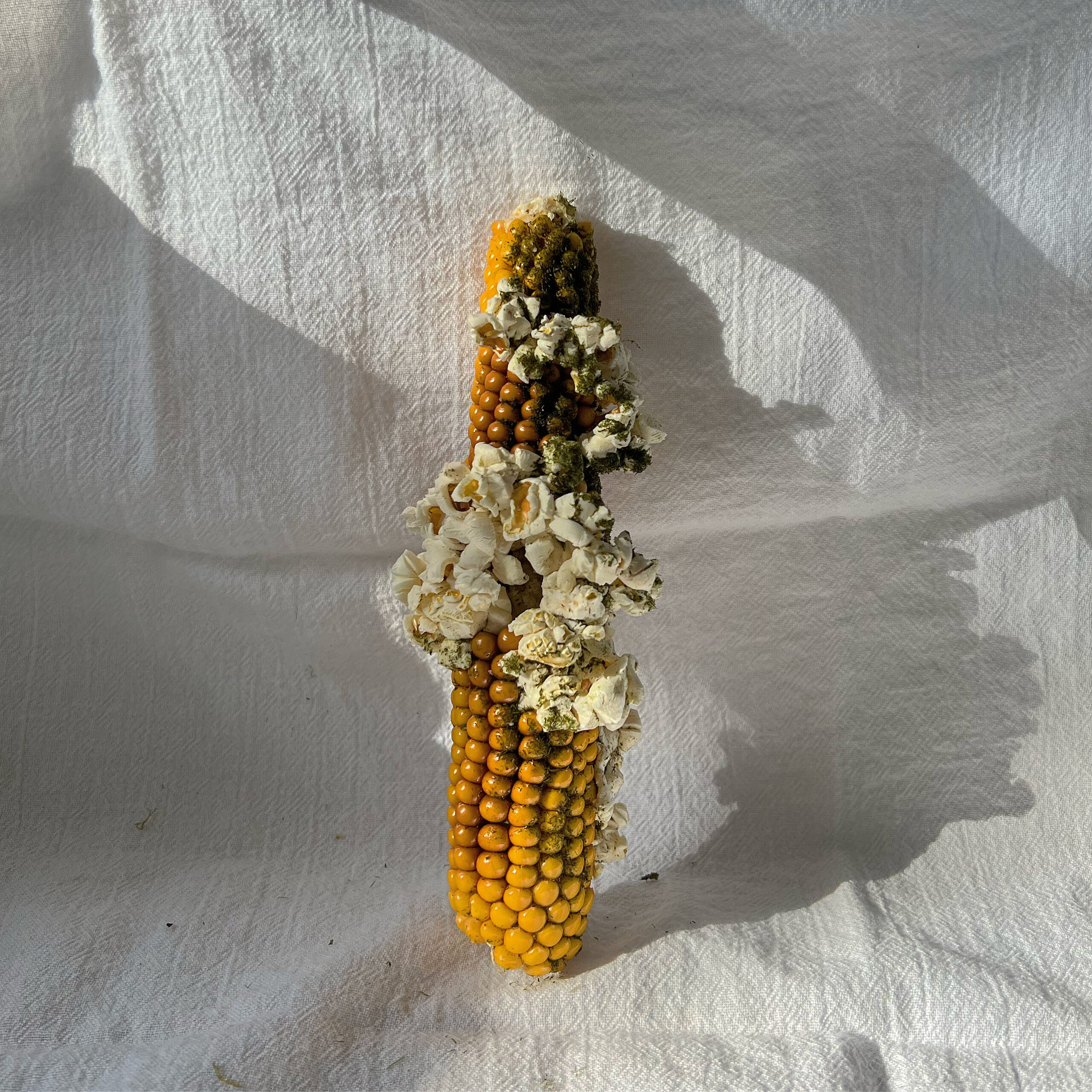
I’d always wanted to work in the food space, so I started Suea’s Dinner Service, an experimental dinner series, while I was still working at OC. I was living in a tiny studio apartment in Chinatown and wanted to exercise my creativity in ways outside of my job. When I left my job in early 2020, I was actually really excited by the opportunity to expand within food. But, just a month or two into the new year, the pandemic hit. I knew that I couldn’t pursue the dinner series for a while. I traveled a lot that year. I spent an extended period of time quarantining in Bozeman, Montana, where I grew up. Then I went to Seoul for 3 months to spend time with my dad and pursue my dream of living in Seoul, even if just for a summer. I came back to New York and started a Cake Service, which seemed like a pandemic-safe way to share my food designs with the world. But to be honest, I don’t really like baking. [laughs] For my cakes, it’s more about the design elements. Sweeter things open up a world of possibilities when it comes to design – there’s a bit more cuteness you can add with sweets, as opposed to savory cooking. Now, I’ve been busy doing a lot of editorial work, creating content for brands with my food and drinks, and also shooting and styling everything myself, or with my boyfriend, who is a videographer. I really enjoy this work because it brings me back to my fashion days, but just the best parts. I’d love to really take on more events. My ultimate goal is to expand my dinner series or have a physical space, but I definitely need more support before I can do all that!
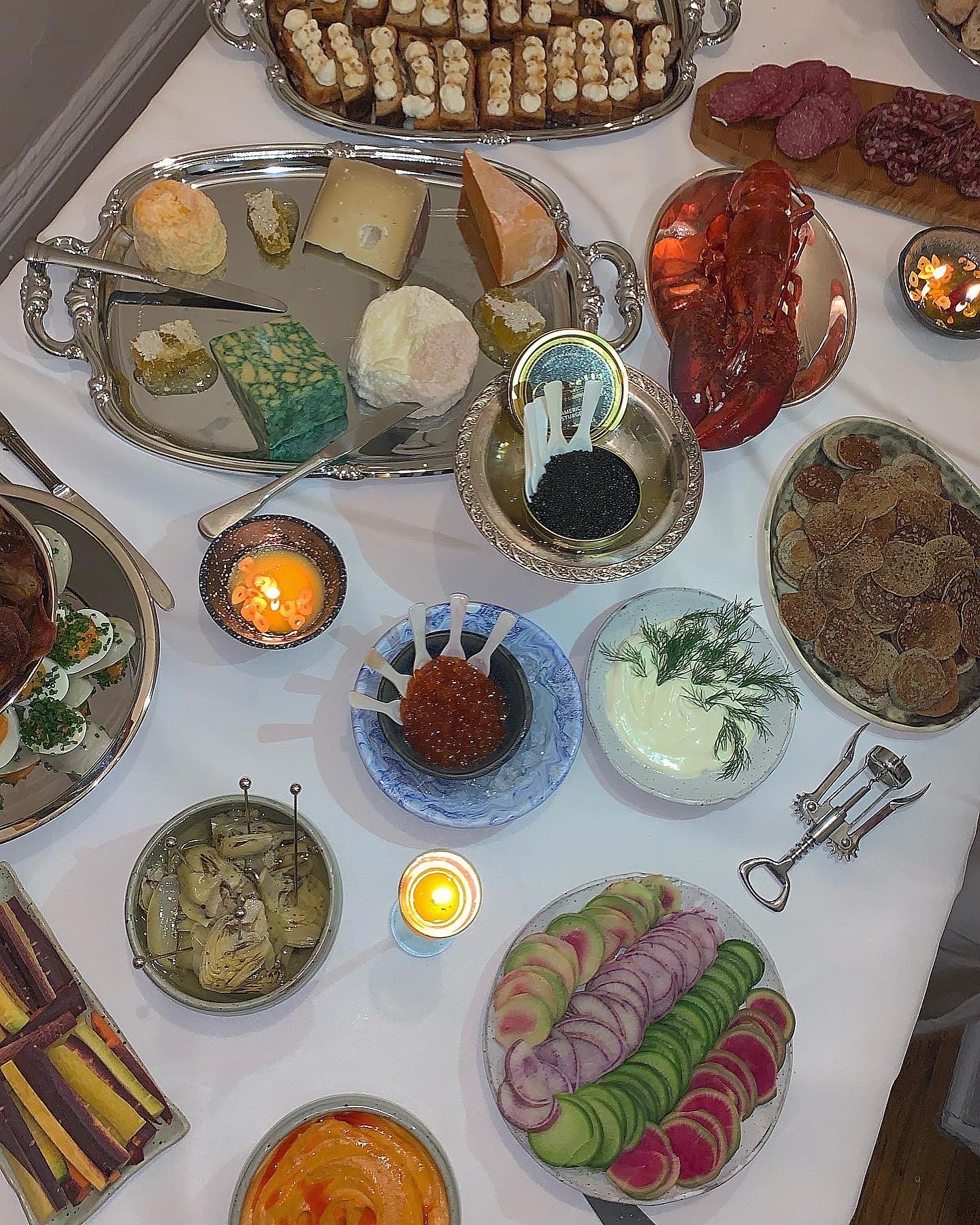

IL:
In juggling so many creative endeavors, how do you find yourself sustaining creative longevity?
S:
My recent trip to Korea in December was instrumental to my creativity in a lot of ways. Travel is important to me and time off is important. Honestly, since I’ve returned from Korea a few months ago, I’ve been working 7 days a week. It’s been too much. So in terms of balance, I don’t think I have a formula yet. But for my creativity, it’s really important to take some time off and travel, even if it’s a local weekend trip.
While I was in Korea, I would spend every morning for an hour researching where I wanted to eat. I was actually glad to be alone because otherwise I couldn’t accomplish my super specific itineraries that were like “I have to go to this store to buy plates, and then I have to go to this restaurant to try these noodles, and then I have to eat this dessert I saw on my Explore page.” I spent a lot of time bothering my aunts in Seoul about their recipes and processes, too. It’s something I want to learn and preserve. It was really a research trip for me and I wanted to learn not just about Korean recipes but also about Korean ceramics and the clay pots that kimchi is fermented in, “onggis”. There’s so much more to Korean cuisine than just the food.
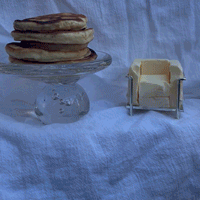
IL:
When you’re approaching the table, you say it’s a big picture aspect. What are some of the elements you’re thinking about when you’re putting a table together?
S:
The first thing I think about is the food. I’ve been making a lot of Korean food in the last year or so, and because a lot of my friends and guests are not Korean, it’s fun for me to introduce new things to them. I don’t necessarily want to educate people who come to these dinners, but food is not just about eating, and I want to spark conversations between the people who are there. I think it’s sad when you are sharing a meal and no one feels the need to mention the food … that’s a bad sign.
I also always try to do something new. When I see people’s faces light up because something I cook for them is interesting and something they’ve never seen before, it brings me joy. So for my dinner service, at its core, I set the intention that it’s going to be unlike any other dinner party. I want it to be a setting in which guests can really interact with the food. I’ve done butter candles, I’ve strung together raw veggies with a needle and piece of string so people could rip it off themselves. I want there to be a sort of tactile aspect to it.
The table setting is also really important to me. I’ve learned so much from being a New Yorker because space is limited and my dining table is never big enough. My dishes are usually family-style for this reason too. I really try to strategize how I can make things pretty without sacrificing space.
There’s always a lot of things at play, because I don’t hire anything out. For example, with flowers, I’ll wake up at 5AM to go to the flower market on 28th Street. I used to say that my dream job would be to be a wedding planner because I really love pulling all these small parts together. My dream now is to have a store with a cafe or run a bed and breakfast in upstate NY, Montana, or Jeju-Do, where I can cook meals for people but also choose the bed linen, the furniture, the bathroom soaps. When I had my friends visit Montana last summer, I folded all of the towels into swan shapes and the dinner napkins into hearts. I watched Youtube tutorials for an hour to do this. My friends think I’m crazy and laugh like, “You didn’t need to do this!” But that’s where I get the most joy, just hosting as a whole – start to finish. I have a hospitality addiction. [laughs]
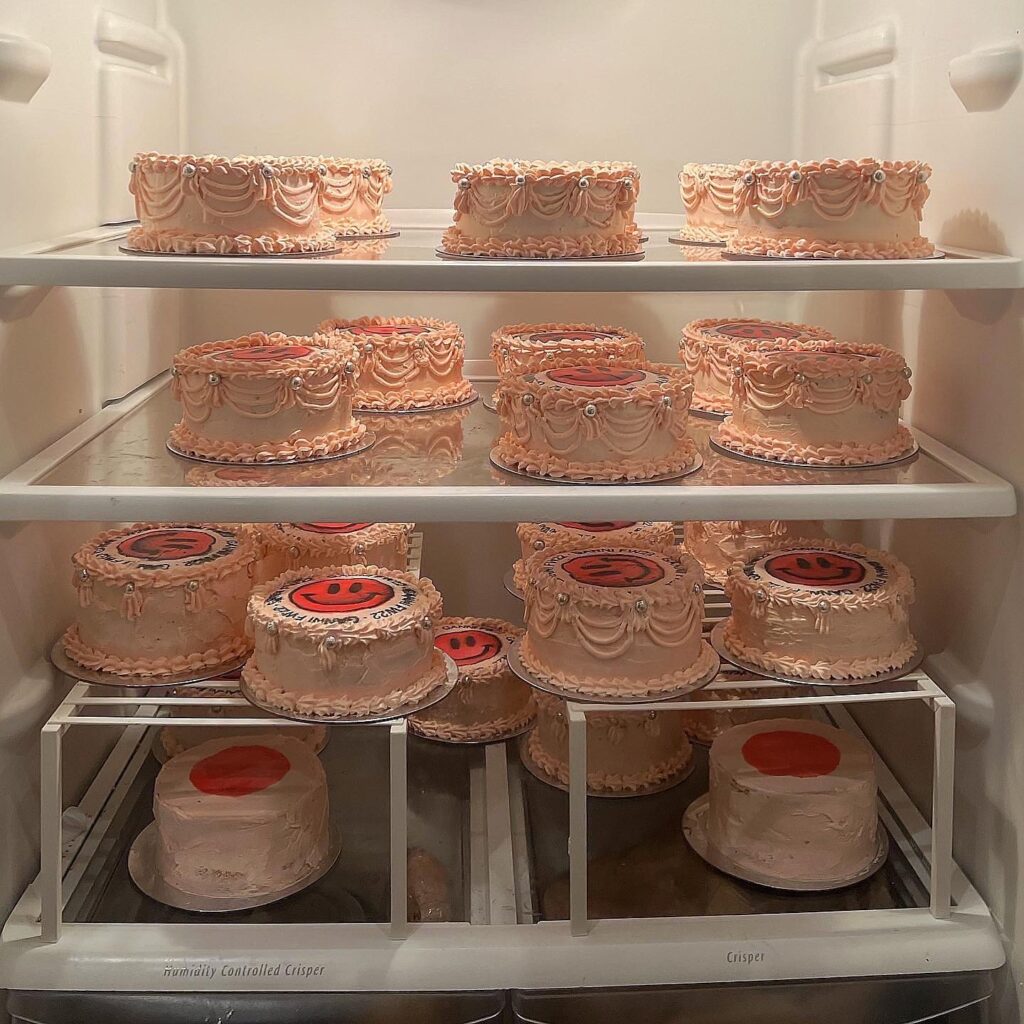
IL:
What do you think makes a good host?
S:
I feel like I learned the rules to hosting from my mom, who always taught me things like “Don’t go empty handed” and “Always offer something.” Sometimes I feel like America lacks these aspects of hospitality. I realized that’s why I really lean toward my Korean heritage when I’m hosting or in my cooking because that was a really big void for me, growing up and experiencing that with friends in the US, there was no routine or ritual with these small details.
Growing up with my family, or with my Korean friends, there are all these cultural ways to show respect and hospitality. For example, when I was in Korea a few months ago, I would have to lie and say I was going to the bathroom in order to put my card down for the meal. These small rituals around eating and care are so fun to me. You can’t really find this attitude in the US, and I think that’s why I’m so deliberate in my parties about making moments for people to feel welcome.
I would have never described myself, especially in my early 20’s, as a caring person. It’s not that I don’t care, but I’m not the sweetest person — I don’t like hugs, I don’t like mushy things, I don’t even believe in horoscopes [laughs]. I’m more logic and mind driven than heart and emotion driven. But I’ve realized that cooking and hosting are definitely acts of care and even kindness and love. I think because my personality isn’t very effusive in that way 90 percent of the time, I go all out when it comes to hospitality and hosting.
IL:
You have a very playful take to food and form, take us through the process from brainstorm to production making of one of your creations.
S:
I used to think about outfits when I was falling asleep, and now all I think about is food. I used to spend so much energy planning and styling my outfits for the next day or week, and now my mind has shifted entirely to my food and what I want to eat or create. People always ask me how I come up with my food ideas, and I find this question so confusing and funny. There’s no way to answer that. It’s like asking a painter how they decide to paint something. I don’t know, it just pops up in my mind. I also think that the more I get into food, the more I want to bring in my other passions. I’ve been really obsessed with furniture and interior design for the last few years, and I’ve thought about how to merge these two things. That’s how my butter chair idea came about. I have a notebook where I write down most of my ideas, but it usually takes me months (or even a year) to get to them. There have definitely been things I’ve thought of a year ago, but never had the time to actually create, and I see it on my Instagram explore page by someone else. The food space is super saturated and quite frankly, competitive right now. It’s motivating, draining, and a wake up call, all at the same time. I think social media has made me realize that a lot of what we are all doing isn’t necessarily revolutionary or something no one else can think of, and that’s entirely okay too. I try not to take my work too seriously. I remember how there would be so many meltdowns and dramatic situations during my time in fashion and I always thought, “wow, it’s just clothes”. And now, that same mentality applies when I’m extremely stressed about meeting a deadline for a food project, or other dramatic situation: it’s just food, and we’re blessed to even have it.
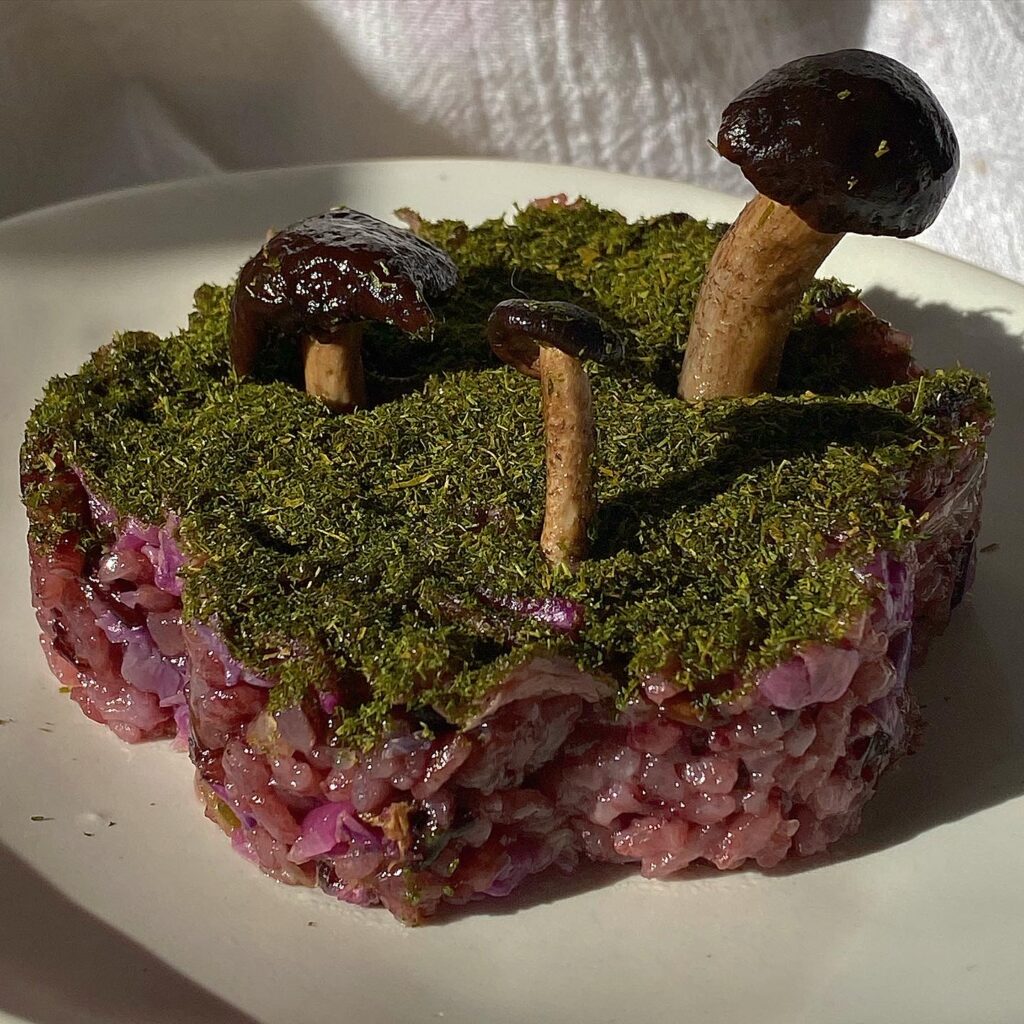
IL:
Your food embodies a distinctive cuteness, from a cake airbrushed with MyMelody to butters molded to look like cherubs. How did you arrive at this aesthetic, and what is it like to create, in some ways, for social media?
S:
I do embarrassingly care too much about Instagram. A few years ago I would not have admitted that, but I am. At the same time, though I’m obsessed with cuteness, I don’t think it’s purely for Instagram. I think an affinity for cuteness and beauty is in my blood, and I’ve known this my whole life, because I know how much Koreans love all things cute. It’s important to me to have a distinct aesthetic direction in the images I take of my food because currently, I can’t share my dinner parties widely. At least through my photos, I can try.
I really enjoy styling my food, picking out the flowers, and details like my plates and cutlery selection. It’s not a chore for me to curate an Instagram worthy photo, because I genuinely love the work. I approach the process as a whole picture and I think that translates to a lot of my work. The number one priority and goal for me will always be that the food is actually delicious, but I hope that people can enjoy and are interested in the other things at play, like the small rock that I’ve placed to hold up the chopsticks and the Korean ceramic plate I sourced in Seoul. I want to have conversations about the food but also about the tools and objects we use to interact with it. That’s very interesting to me.
A lot of people critique Instagram because it’s a space where people are so often presenting the ideal versions of themselves. I know for my food, I do this too. It’s very often a curated, “cute” photo of my food. But I don’t think this is toxic. I think it’s okay to have these fantasy spaces and it’s okay for my food to look cute. At the same time, it’s really important to me to be transparent about the process and the work that goes into each thing I make, and I make sure to share with people that this final iteration isn’t representative of all the different failures that went into it. I try to show the fuck-ups and let people know things like “I tried 8 different other natural dyes before realizing this worked”, or even “This honestly tasted bad, even though its pretty.” I try to be honest in that way because I don’t want people to think that I’m always on it or driven by perfection.
IL:
What is one of your earliest food memories?
S:
When I was a baby, my family lived in Germany for a year. Right when I was starting to eat real food, I had a Korean babysitter who would blend kimchi in a blender and feed it to me because I didn’t have teeth yet. My mom and my sisters always talk about this because apparently I was obsessed with this blender kimchi. I always liked spicy food. My mom also always tells me that when I was 4 or 5 and able to start eating solid foods, we would go to McDonalds, and I would eat an entire Big Mac by myself. I’ve actually never had a Big Mac since, but I think this is so funny because it shows how obsessed with food I’ve been my whole life. People constantly ask me how I think of what to cook, and the only thing I know for sure is that it comes from me simply loving to eat. I think you can tell with the food I create. I really make sure the flavor is there. Sometimes I see food creations on Instagram, and I can kind of tell the person who made it doesn’t eat much, or truly enjoy food. Even though the creation is beautiful, it looks bland, and to me there’s a lack of warmth in this type of food!
